When you next head out to your backyard, we want you to be as vigilant and observant as possible. There might be something nasty right below your nose. We are talking about a small brown bug that is much more trouble than you would have ever guessed. If you ever spot one of these critters on your property, it is important to do something about it right away. You better hurry up because it might be too late if you do not act as soon as you can. Once you know more about them, you will be better equipped to keep your garden and crops away from harm’s way!
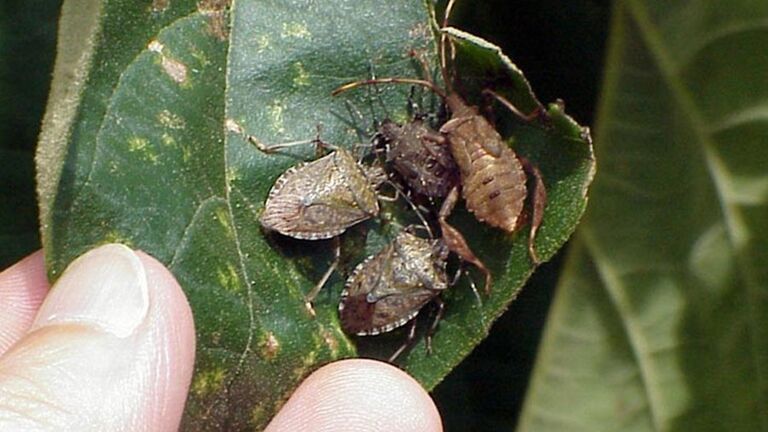
Make Sure To Take Action Right Away If You Find This Bug In The Yard
Be On The Lookout For This
Let us first get this out of the way. What should you keep your eyes peeled out for? After all, it is not particularly easy to distinguish insects. When it comes to this little bug, it has a round body and six legs like most other critters. However, it has a rather unique back that looks like an old shield of sorts.
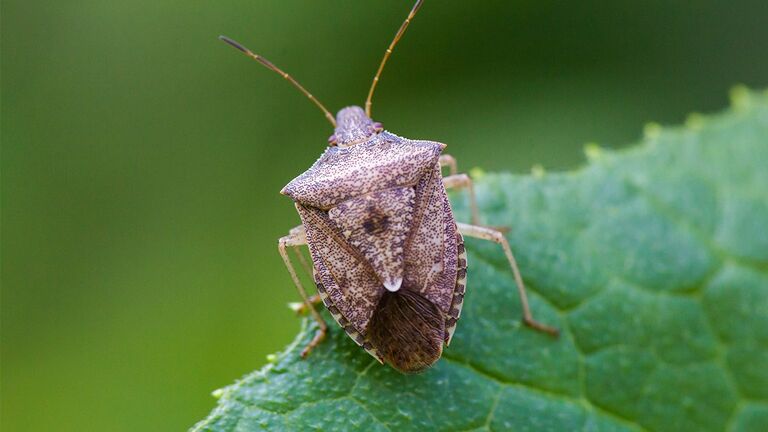
Be On The Lookout For This
Do Not Be Fooled By The Size
When this bug is fully grown, it can reach a measurement of about 0.7 inches. All in all, it is a pretty tiny thing. You should not be fooled, however. Its size does not stop it from turning your backyard into a mess. The ground is not the only thing that you need to inspect because this little bug has wings as well.

Do Not Be Fooled By The Size
They Do Not Just Stay In The Yard
As a word to the wise, the brown bugs are not only happy hanging out in the garden. In fact, they might even appear inside the house! These tiny insects can actually get everywhere unless you are careful. No one wants to see them in wall cracks and curtains, right? Read on to see what you can do about them.
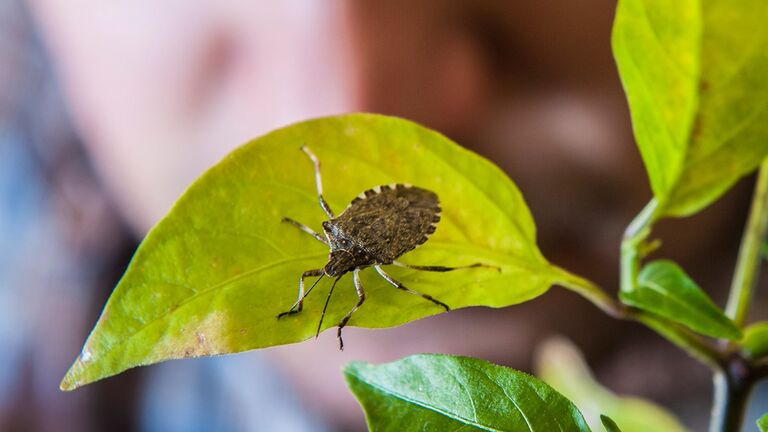
They Do Not Just Stay In The Yard
The Brown Marmorated Stink Bug
Let us introduce you to these critters properly. The species is called Halyomorpha halys, but some people simply refer to it as the brown marmorated stink bug. Yep, this is not all that flattering of a name. However, you will see why this is the case once you hear about the havoc they wreak.
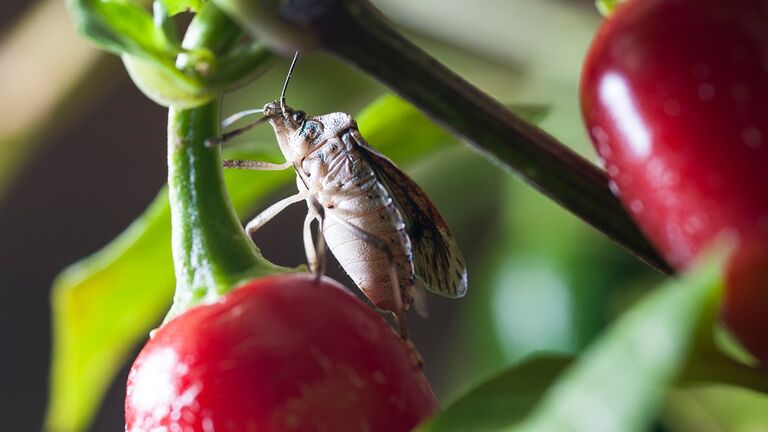
The Brown Marmorated Stink Bug
Where It Actually Hails From
It is interesting to note that the brown marmorated stink bug is not native to the West. Despite this, it has cropped up in both the United Kingdom and the United States. This species hails from Asia. Before it branched out, the species used to live in East Asian places like Taiwan, China, Korea, and Japan.
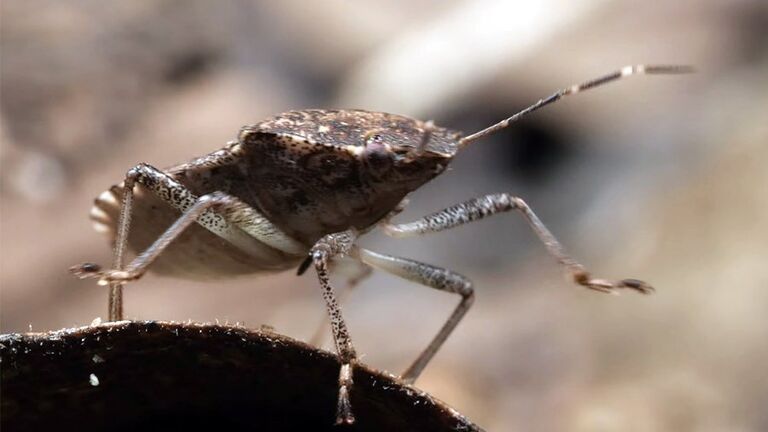
Where It Actually Hails From
How It Reached This Part Of The World
In case you have not figured it out, it is an invasive species. But how on earth did it even reach the other side of the globe? An expert has a theory that might explain this. Max Barclay might have the answers to our queries. After all, he is the person in charge of the National History Museum’s Coleoptera collection.
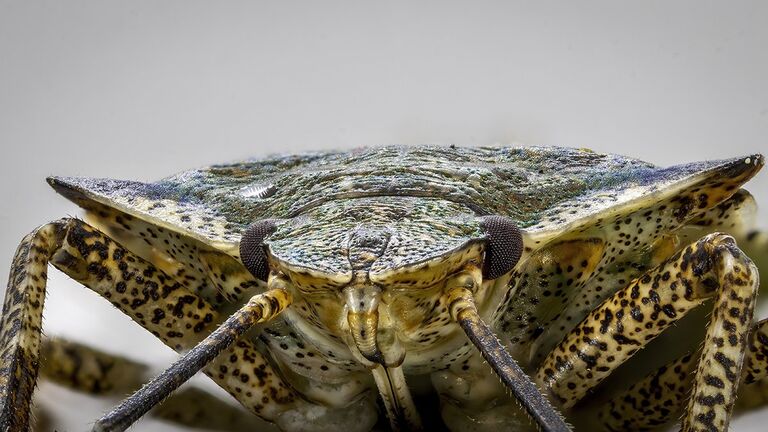
How It Reached This Part Of The World
It Traveled On A Cargo Ship
In March 2021, he shared his opinion with The Guardian. He said that the stink bug must have reached the United Kingdom after it hitched a ride on a cargo ship. No one realized that there was a stowaway on board. However, there is more to this than that. It is not as if the insect jumped aboard for no reason.

It Traveled On A Cargo Ship
They Are Not Active In Winter
Barclay took the time to tell The Guardian that stink bugs are not active in the colder months of the year. They need a cozy hideout until it starts to get warm again. This is a process known as “diapause.” This is the way tiny insects hibernate. We are sure that a container of cargo sounds cozy to these fellas.

They Are Not Active In Winter
The Bugs Thrive In Warm Places
There is a bigger problem, however. The stink bugs do not just prefer warm places, but they also thrive in them. Now that climate change is looming over us, they must be having a field day. If global warming does not stop in the future, these creatures might become even bigger threats than they already are.
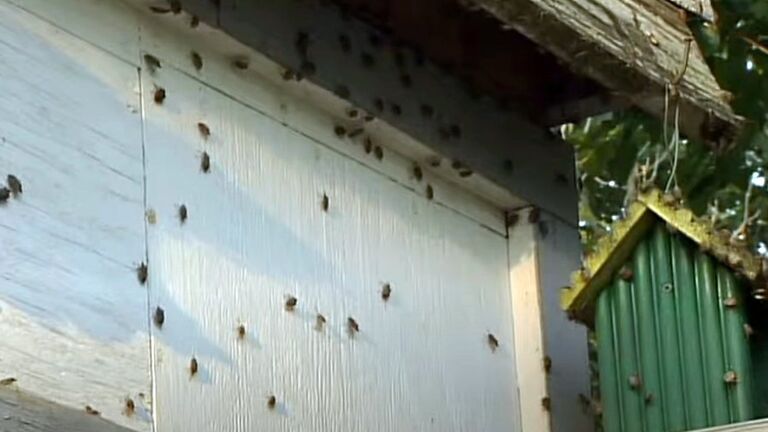
The Bugs Thrive In Warm Places
By The Turn Of The Century
This fear was front and center when a team of experts shared their findings in the International Journal of Biometeorology in August 2020. They estimated that about half of Switzerland would be ideal for the bugs by the time the 2100s roll in. As we all know by now, it is easy enough for the bugs to get there.

By The Turn Of The Century
An Expert On The Stink Bugs
One of the experts who joined the research used to work at the Centre for Agriculture and Biosciences International or CABI. Dr. Tim Haye is an expert when it comes to these stink bugs. Isn’t that the most amazing thing you have ever heard? Anyway, he shared his key findings on the CABI website last year.
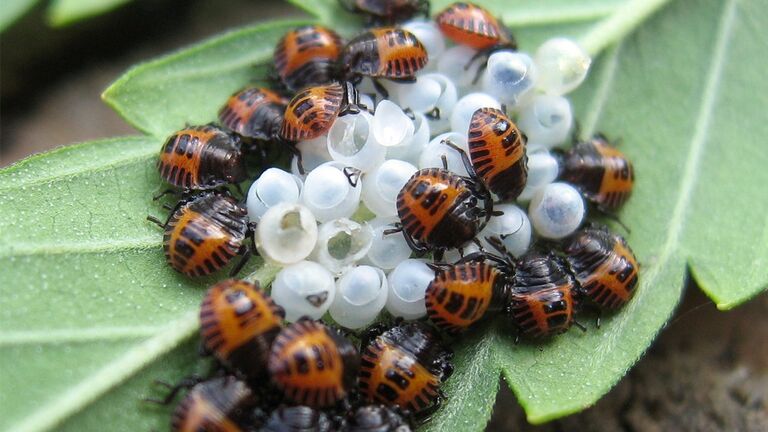
An Expert On The Stink Bugs
How It Is Affected By Climate Change
“There is strong evidence that climate change is already modifying species,” Dr. Haye said. He also talked about how this impacts the number of stink bugs produced every year, where they wind up, and their life cycles. He added, “It is evident that the number of non-native species will increase and that climate change will promote their establishment. The north-western part of Switzerland could become completely suitable for H. halys.” Folks in Switzerland should be wary of what the future holds for them.
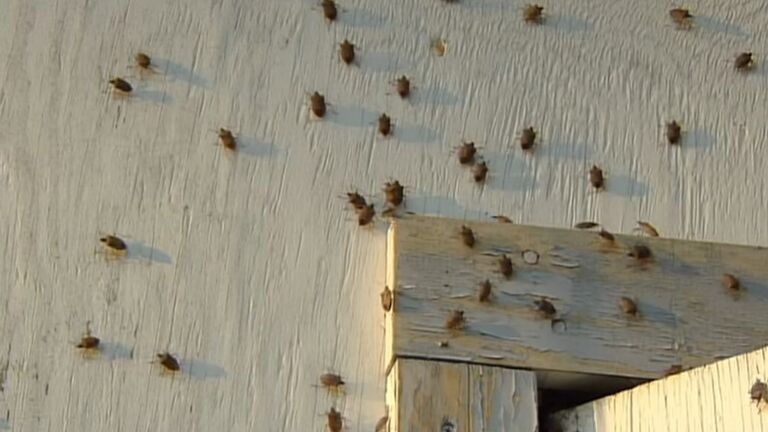
How It Is Affected By Climate Change
It Will Not Take Very Long
“Southwards, the projected range expansion would reach the foothills of the Alps,” the expert went on. “And higher latitudes in the alpine valleys could become suitable under future climate conditions. Monitoring the spread and population development in the north-western part of Switzerland, and higher altitudes of the valleys in the south, are recommended.” These bugs might soon be found in different parts of the globe! This is not exactly a world tour that you should feel happy about, however.

It Will Not Take Very Long
This Is A Cause For Concern
Without a doubt, this is a cause for concern. Even though the 2100s might seem like a long time away, we should not relax. The situation is already pretty bad in America, for one thing. It is not a laughing matter how easily they are spreading across this part of the globe. Let us hear more about it.
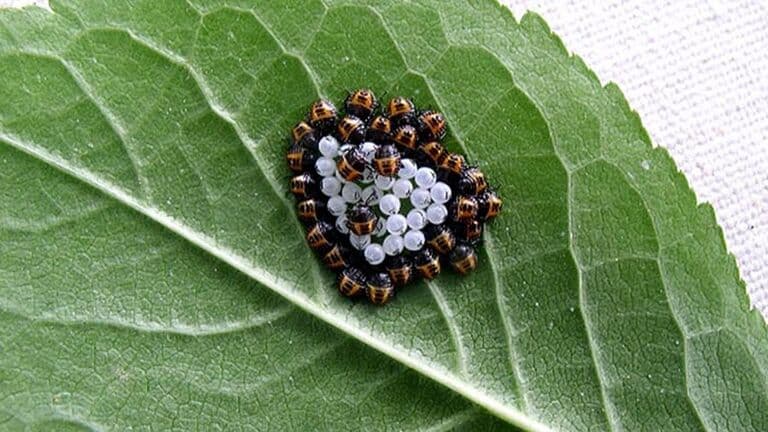
This Is A Cause For Concern
First Seen In The United States
When did this stunk bug first reach the United States? PestWorld.org claims that the first time it was spotted was in 1996. This took place in Allentown, Pennsylvania. It was only confirmed five years after that incident. Prior to that, no one in the country had any idea what the bizarre critter really was.

First Seen In The United States
Wreaking Havoc On The East Coast
The stink bugs went loose on the East Coast. This invasive species reached New Jersey and settled in Virginia in 2004. More recently, these insects have also hit North Carolina. This is already worrying enough news on its own, but this is barely a fraction of their movements across the United States.
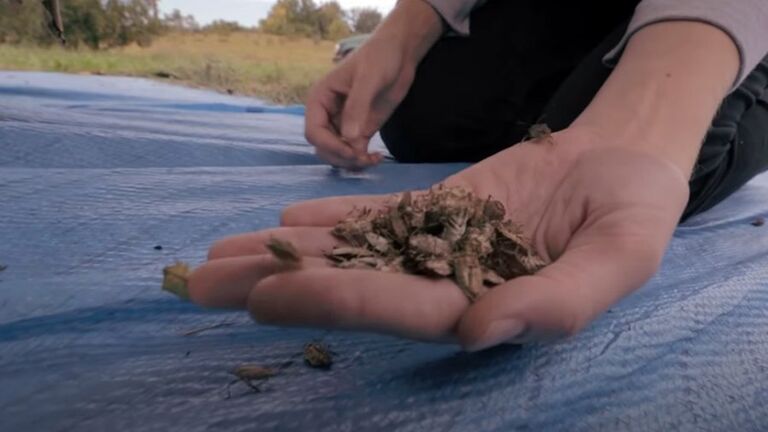
Wreaking Havoc On The East Coast
Present In All But Six States
Can you believe that the stink bugs have since reached a total of 44 states? Mind you, they only needed 25 years to achieve this. Without a doubt, this is an amazing feat when you consider just how big the United States is. However, we wonder just how long it will take them before they reach the last six.
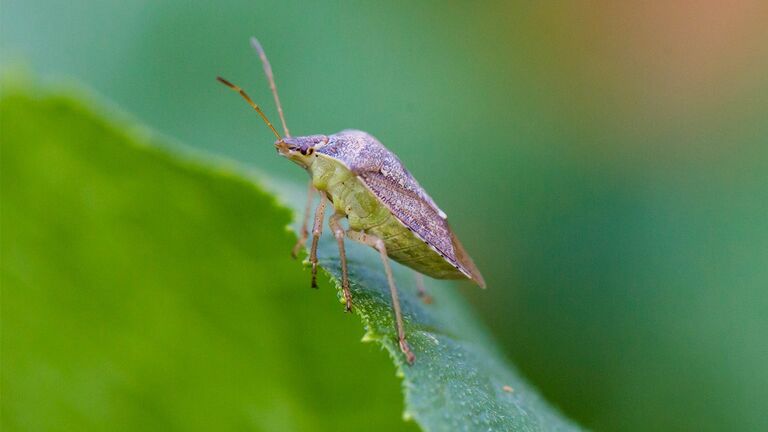
Present In All But Six States
Why They Are Called Stink Bugs
If that day comes, the residents are going to realize why these creatures are called stink bugs. Just like a skunk, this insect will release an awful odor whenever it feels like it is in danger. It is also worth noting that the fumes are capable of covering a couple of inches of the surrounding space.
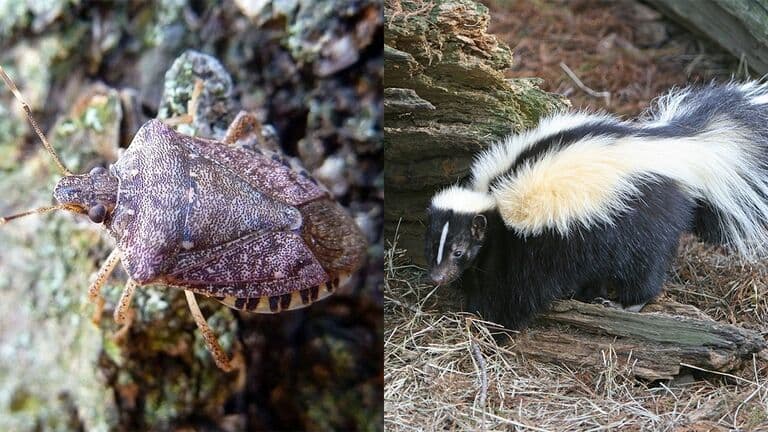
Why They Are Called Stink Bugs
What The Odor Smells Like
You might think it is strange, but there are people who claim that the odor smells like different spices and herbs. To be specific, a lot of them say it reminds them of cilantro. The Guardian, on the other hand, said that it resembles almonds more. We do not know which is true, but we would rather not find out.

What The Odor Smells Like
The Smell Is Not The Worst Part
You probably should not ignore the bugs if you ever spot them in the yard. Just so you know, the smell is going to be the least of your worries. Stink bugs like to eat crops and garden plants. They like fruits and veggies. They might be tiny, but just you wait until you see what kind of damage they can cause.
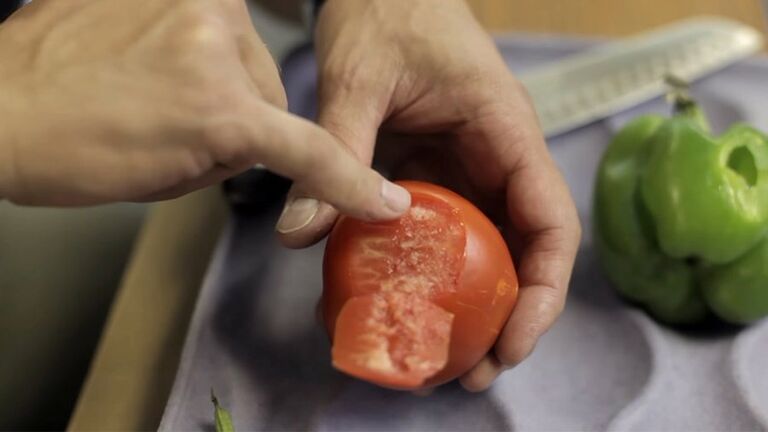
The Smell Is Not The Worst Part
What Else They Can Do
Are you ready to learn more about what these insects can do? The Guardian said that farmers in the United States lost close to $40 million worth of apples because of the stink bug in 2010. This might sound unbelievable, but what makes this even worse is that they did not eat all the fruits to the core.
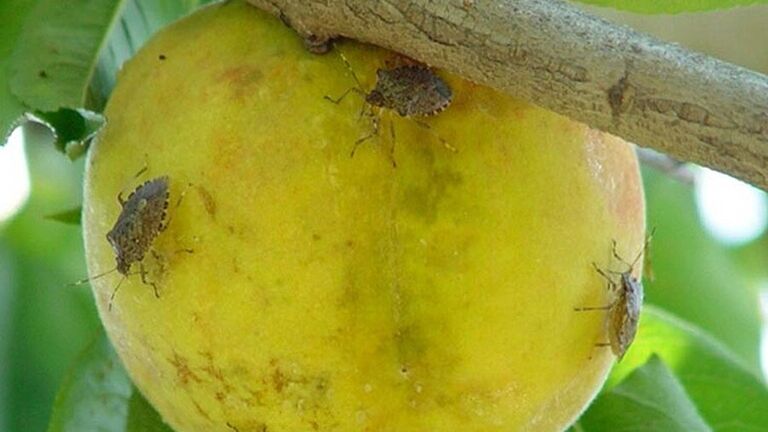
What Else They Can Do
The Crops Are Rendered Useless
No, the critters instead left behind brown stains in the places that they bit from. In essence, they rendered the apples useless. These animals do this again and again to every other crop that they target. It can be anything from grapes to cucumbers. Folks in the United Kingdom are right to be worried.
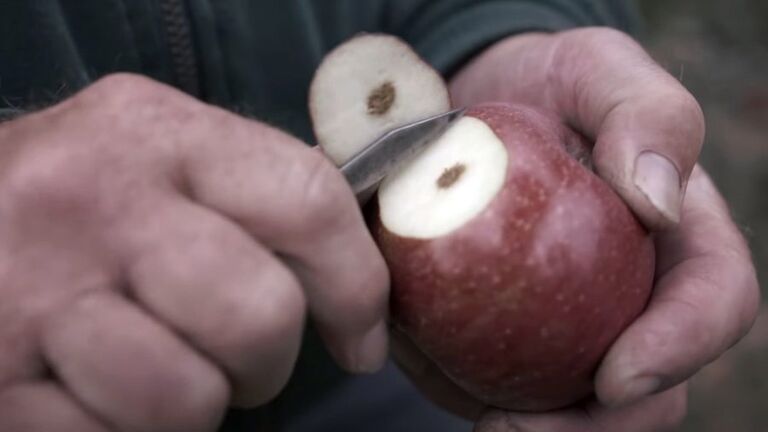
The Crops Are Rendered Useless
It Is Bad For The Wine Industry
But what makes the British so worried about their grapes in relation to these critters? If you put stink bugs in a grape crop, the odor can destroy whole wine batches. This is bad news for wine lovers and wineries. The wine business is on the rise in the United Kingdom right now, so they cannot afford this.

It Is Bad For The Wine Industry
How To Get Rid Of The Pests
Now that you know more about what they can do, we are sure that you want to know how to get rid of them. In March 2021, Max Barclay had pretty grim news to share with The Guardian. He said that there is no way to get rid of such an invasive species. He likened it to a different insect in the United Kingdom.

How To Get Rid Of The Pests
They Can Infest Your Yard Quickly
“[The stink bugs] establish [themselves] pretty quickly,” he said. “We’ve seen this in a lot of invasive species before. You find one or two and then they are everywhere. The harlequin ladybird from China arrived in [the United Kingdom in] 2006, and now they are enormously abundant.” But do not worry…
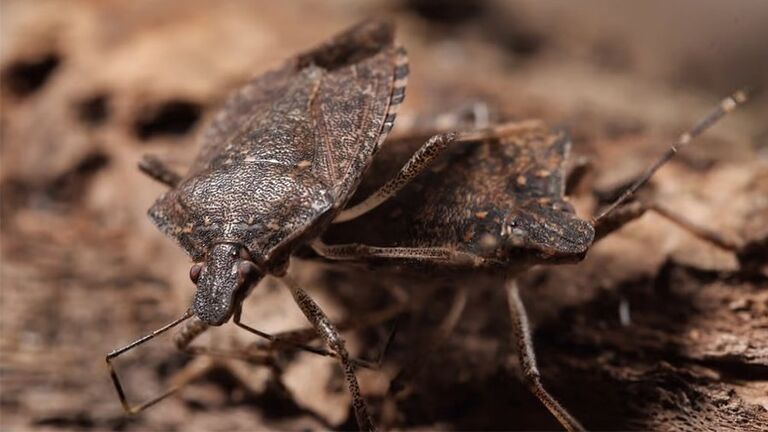
They Can Infest Your Yard Quickly
It Is Possible To Solve This
Large-scale efforts to get rid of the stink bugs might not have worked, but you can do something about your garden if it gets infested. There are several tricks and tips that you should follow to keep your crops safe from these pests. On top of that, you can protect your home from them at the same time.
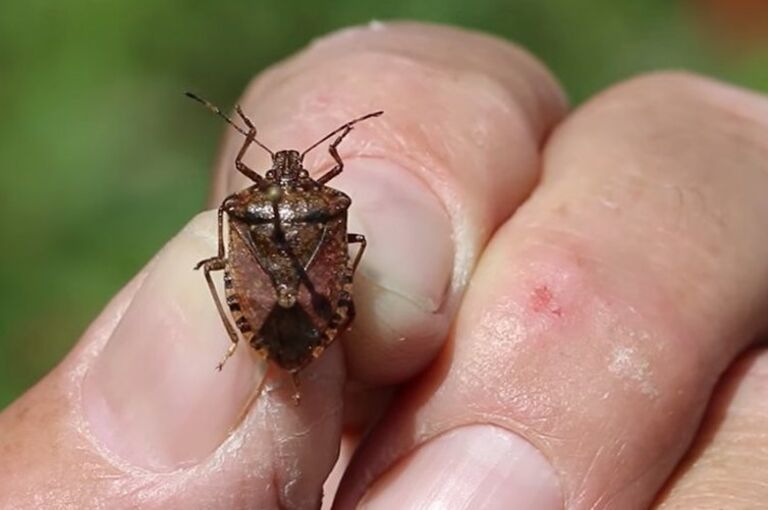
It Is Possible To Solve This
Look For Weeds In Your Yard
First of all, make sure to look for unwanted weeds in the yard. Stink bugs like to use greenery like this to keep themselves hidden. Tear them out and move everything that the insects could use as a hiding place. This involves ornaments and decorations. After that, you should pay attention to your flowers.
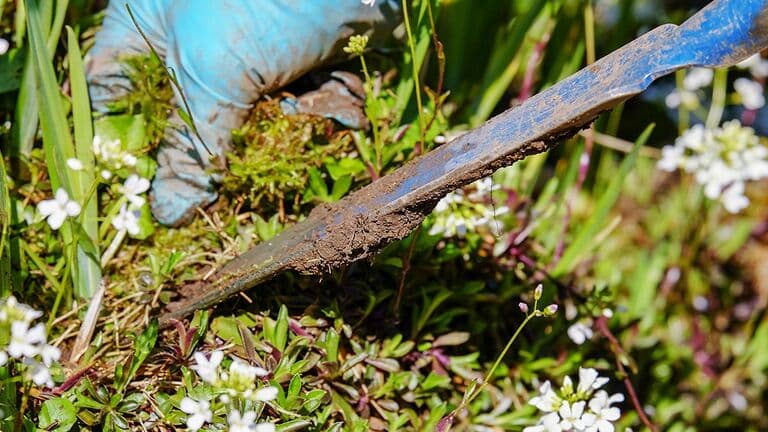
Look For Weeds In Your Yard
Make Your Very Own Repellent
If you ever see the stink bugs in the yard, it is time to whip up a repellent to get rid of them. There is a mineral form of clay called kaolin clay solution that you can mix with 15 ml of dish soap and a few gallons of water. Gardening Know How says to mix them and put the resulting mixture in a spray bottle.
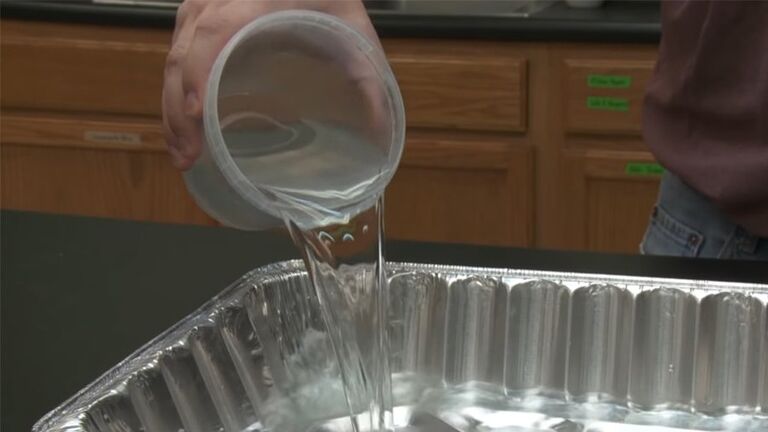
Make Your Very Own Repellent
The Mixture Will Make Them Stop
Once you are ready, it is time to get squirting. According to the same website, the stink bugs will stop munching on your crops or flowers once you douse them in the mixture. On top of that, this will prevent them from laying eggs on the fauna. No matter how you look at it, this trick is definitely handy.
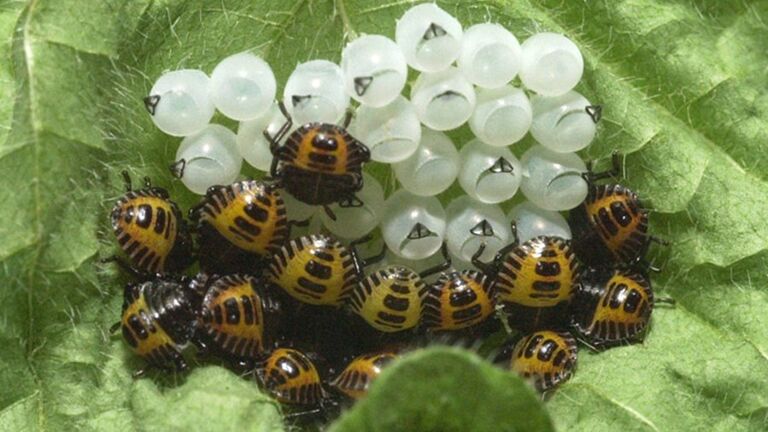
The Mixture Will Make Them Stop
It Is Not Bad For The Plants
There is no need to worry because this mixture is not bad for your flowers and plants. Do not forget to run the garden hose over them once you get rid of the stink bugs. Are you looking for something more lethal way to address it than this trick? If so, it is also possible to buy a “trap plant” instead.
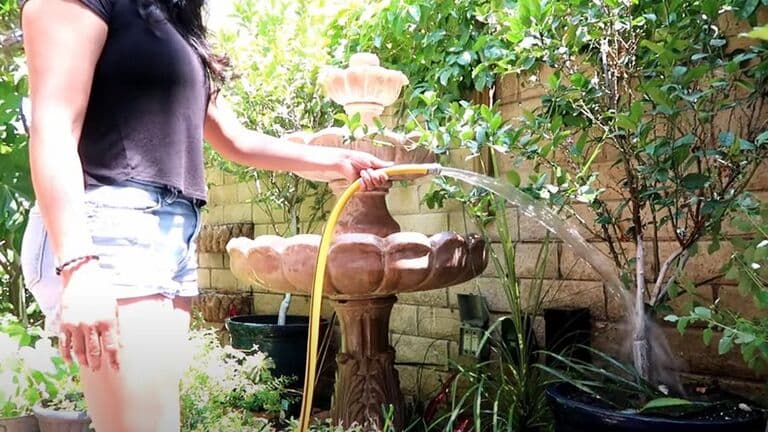
It Is Not Bad For The Plants
You Can Also Use A Trap Plant
Just so we are clear, we are not talking about the Venus flytrap. You can do this with any other normal plant, but you need to pick one based on color. Stink bugs like yellow flora, so we recommend garlic, sunflowers, and mustard for this trick. Keep reading to see how this trick is going to play out.

You Can Also Use A Trap Plant
Pick An Isolated Area In The Yard
You have to look for an isolated spot in the garden that is nowhere close to your plants. You can then install the “trap” by playing your yellow plant. There is a good chance that the stink bugs will flock here and ignore all the others. What happens after this is up to you. You can just have them stay there and then encourage creatures to pick them off from the trap.
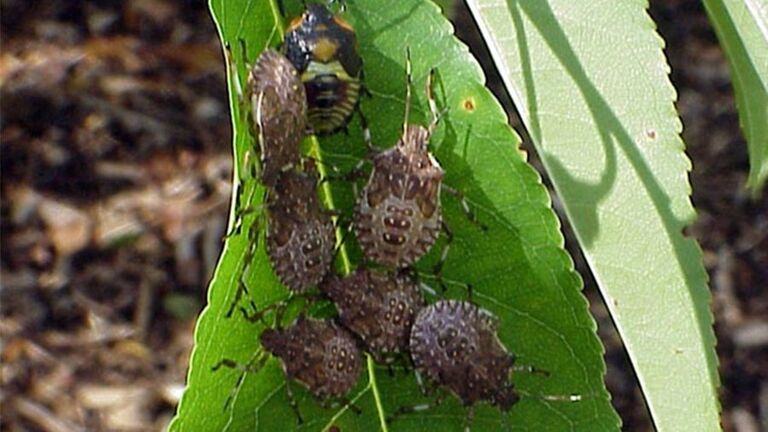
Pick An Isolated Area In The Yard
How You Can Dispose Of It
It is also possible to dispose of this plant as soon as the stink bugs have made a home out of it. You only need to dig up the plant and put the whole thing in a garbage sack. Do not throw this right away. Instead, you have to leave it in a sunny spot because the heat will kill the pests in a matter of days.
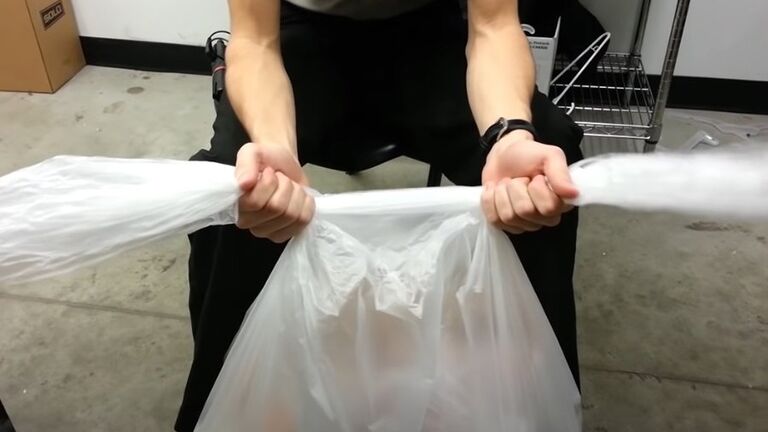
How You Can Dispose Of It
Seal All The Potential Openings
When it comes to your house, it is wise to use a sealant on potential openings. Mind you, stink bugs are excellent when it comes to looking for small gaps in doors and windows. When they want to get in, they will do everything they could. A tiny hole is enough for them since they are so small. Stay vigilant!

Seal All The Potential Openings
You Can Also Use The Vacuum
There is no need to panic in case they manage to squeeze their way in. You can always take care of this issue in a different way. You just have to grab your vacuum cleaner. Yep, you can just suck them up and dump the sack as soon as you are done. Trust us, you do not want the smell to linger in your house.

You Can Also Use The Vacuum
In Case You Have An Infestation
That is basically all there is to it. If stink bugs infest your yard, we are sure that you now know what to do about it. However, the truth is that these critters are not the worst thing that you can find in the yard. Sorry, but they are barely the tip of the iceberg. Let us hear it from the Royal Horticultural Society.
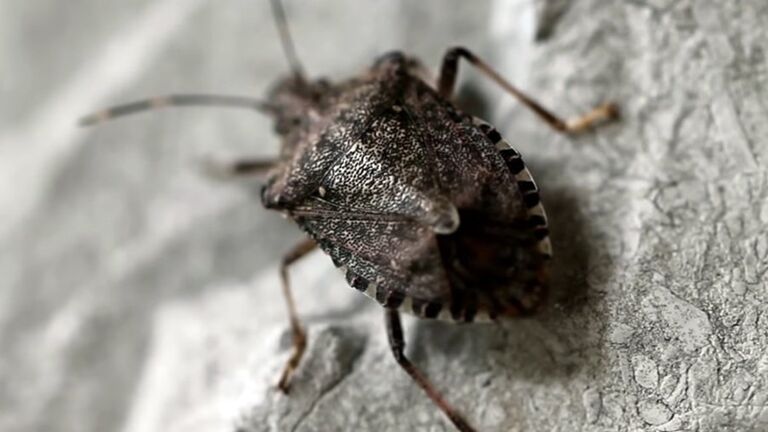
In Case You Have An Infestation
Both Obscure And Familiar Pests
In 2020, the rankings came with a mix of both familiar and obscure creatures. For one thing, the capsid bug and the glasshouse mealy bug tied for tenth place. A couple of entries after that, we have ants in fourth place. The crow went to slugs and snails, edging out the vine weevil. What a funny name!
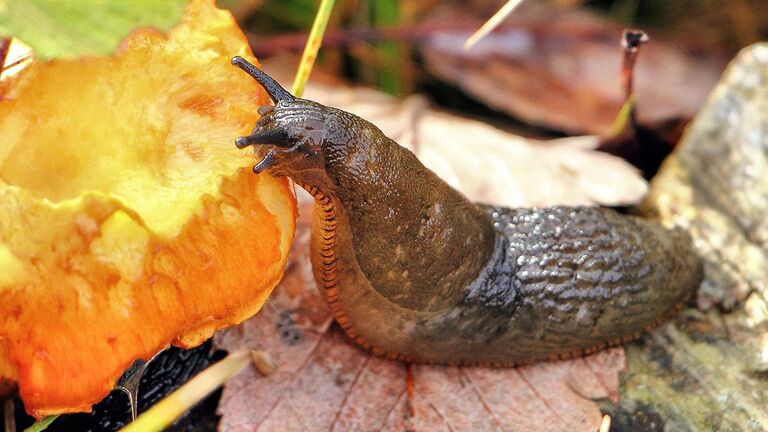
Both Obscure And Familiar Pests
Stink Bugs Are Not On The List
Stink bugs did not make the cut, but a leading insect expert at the Royal Horticultural Society said that they might appear on the list in the future if we do not act soon enough. Andy Salisbury was the one who said this. He explained in greater detail when he spoke to the BBC News network in March 2021.

Stink Bugs Are Not On The List
How To Keep Our Gardens Safe
“With gardens taking on a more important role in supporting well-being and the environment, it’s important that research into management and mitigation of them continues. And our rankings help inform this focus. It’s also imperative that we continue to anticipate future threats such as the marmorated stink bug to protect our gardens,” he explained. We hope that you are ready for this fight.

How To Keep Our Gardens Safe
Gardening Can Be A Complex Hobby
If we have learned anything from this, it is that there is more to gardening than digging and planting seeds. You need to be careful and observant. The bugs are far from the only thing that you need to look out for. It is also a good idea to be on the lookout for these small eggs. Can you guess what these little spores might be?

Gardening Can Be A Complex Hobby
When The Sun Comes Out
When spring rolls in, it is only natural for people to head outdoors to enjoy the sun and weather. People prefer to visit the beach for some fun in the sun, but others are fine with the park. If you are not all that outdoorsy, this is also the best time of the year to carry out your home improvement projects.
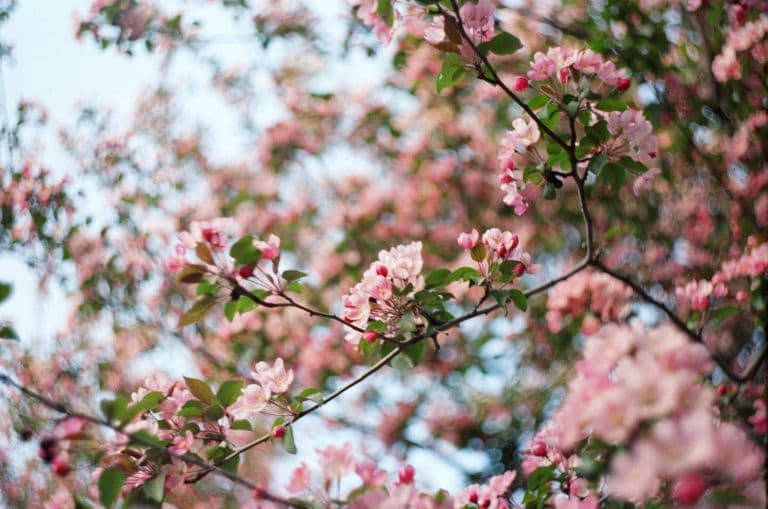
When The Sun Comes Out
The Best Time To Fix Up The Yard
Once the sun has come out of hiding, it is high time to fix up the yard for the summer. After neglecting it during the winter, we are sure that your lawns can use some TLC. Homeowners pull on gardening gloves and get to work in the spring. If this is your plan, make sure to look out for these eggs first.

The Best Time To Fix Up The Yard
Horticulture Is Big Business
In case you did not know, horticulture has always been big in the United States. A study, for one, revealed that half of all homeowners in the nation have gardened in the year prior. As a matter of fact, American households ended up spending $29.5 billion or so for work on their yards. Whoa.

Horticulture Is Big Business
On A Mission To Shape Up The Yard
When spring arrived earlier this year, folks headed outdoors on a mission to improve their yards. They received a warning courtesy of the U.S. Fish and Wildlife Service, however. You see, the organization has expressed that it is worried about the impact of home gardeners on the native wildlife of the country.

On A Mission To Shape Up The Yard
The Fish And Wildlife Service
In 1940, the U.S. Fish and Wildlife Service was formed. Its goal is to conserve the plants and wildlife in the country. The organization takes care of the natural habitats of these native creatures. This is the mission of the agency: “Working with others to conserve, protect, and enhance fish, wildlife, plants and their habitats for the continuing benefit of the American people.”
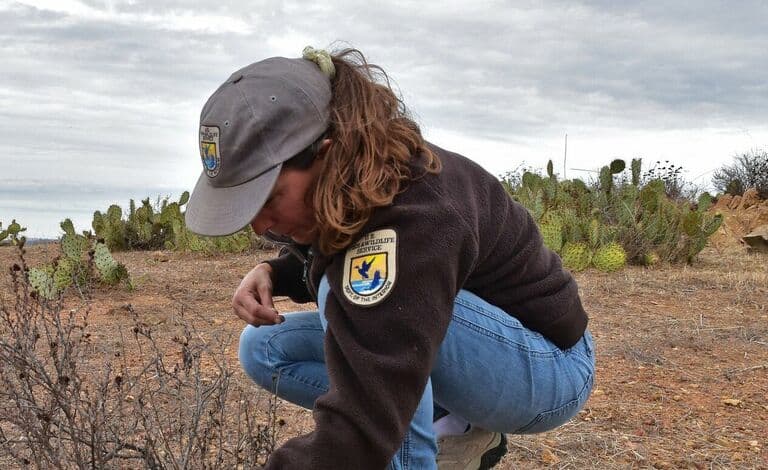
The Fish And Wildlife Service
How The Organization Works
To make this mission come true, the organization is armed with a workforce made up of 9,000 dedicated folks. The administrative base of the U.S. Fish and Wildlife Service is in Falls Church, Virginia. It also has eight regional offices and nearly 700 field offices all over to nation to carry out the work that it does.

How The Organization Works
They Need Help From All Of Us
Most of the fish and wildlife habitats in the United States exist on non-federal state or private land. This is the reason it works with private entities. This setup has allowed the team to promote conservation and restoration efforts among volunteers. It also needs the help of the public to carry out its mission.

They Need Help From All Of Us
Social Media Helps Them Too
With this in mind, the organization also relies on social media pages to ask people to help with its goals and efforts. There are more than 600,000 people following the agency on Facebook. This has given the agency a better way to relay information to the general public about what they can do to help.
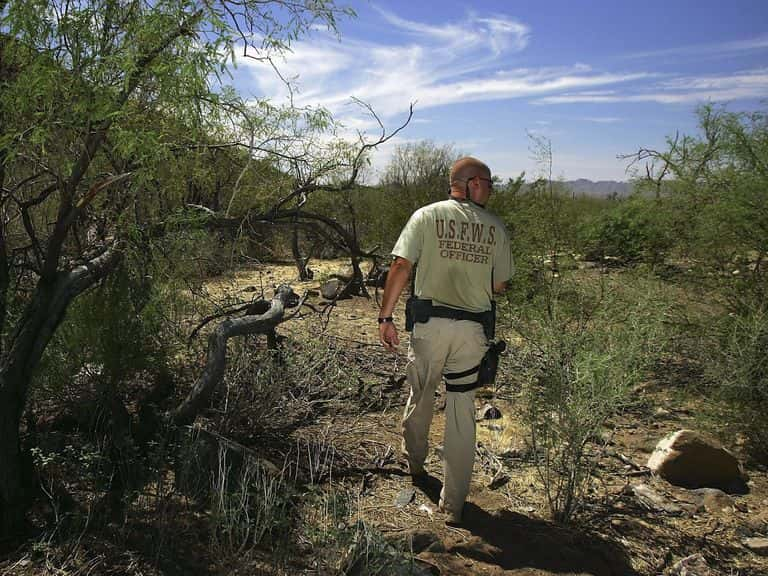
Social Media Helps Them Too
Nesting Birds In The Spring
In the spring, the U.S. Fish and Wildlife Service has its eyes on nesting birds. It is stressful for these creatures to raise their young. This is the reason the wildlife agency took the time to remind the public that they should be mindful of these habitats. They were also asked to steer clear of the nests whenever they could.
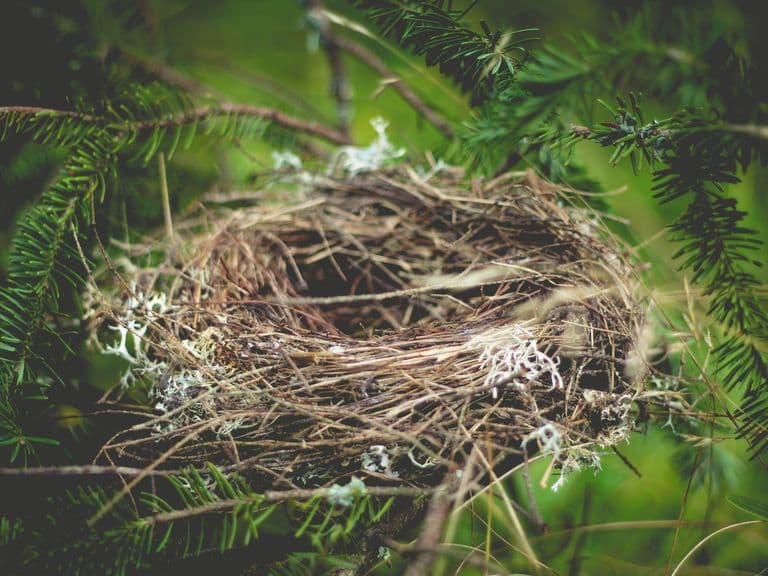
Nesting Birds In The Spring
Stay Away From The Bird Nests
In 2016, the U.S. Fish and Wildlife Service posted a statement on its website. It read, “By maintaining a respectful distance from the bird nests, we can help ensure that the birds will not be sensitive to disturbance since if they feel threatened they may even abandon young. We certainly don’t want to detract from the incubation process and we don’t want to interfere with them in their home.”
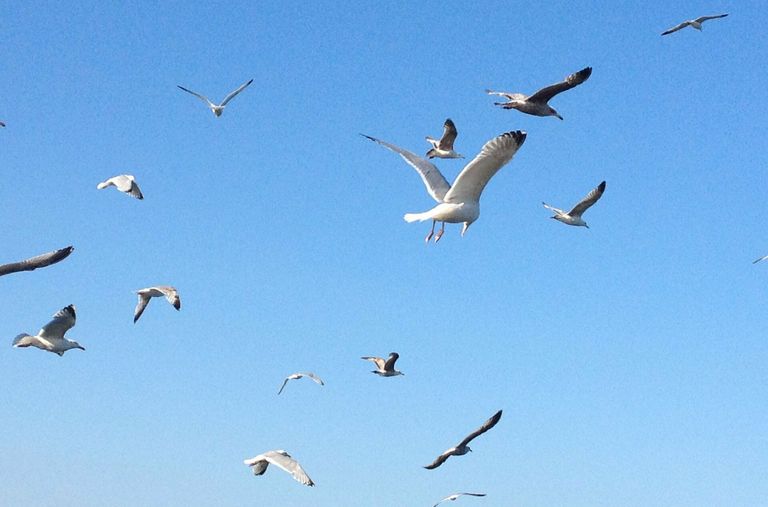
Stay Away From The Bird Nests
What Happens In The Spring
In the months of spring, a lot of North American birds try to look for mates. As they prepare to raise the young, they then make nests that act as incubators for the eggs. These also double as nurseries for offspring in the future. As you can imagine, these nests are very important to their species.
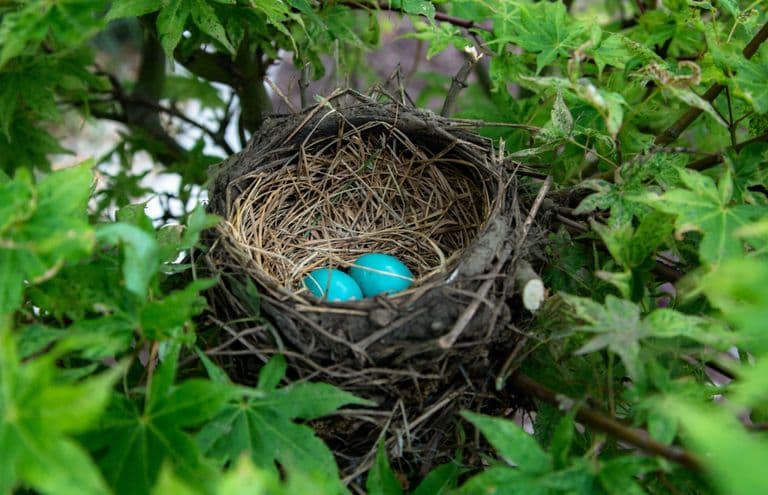
What Happens In The Spring
You Might See Them Around
Knowing all of these things, it is not at all odd for homeowners to stumble upon birds’ nests when spring rolls in. Should this happen, you should know that a lot of nests are under the protection of the law. Based on the website of the agency, this is because they are deemed “active” in the breeding season.
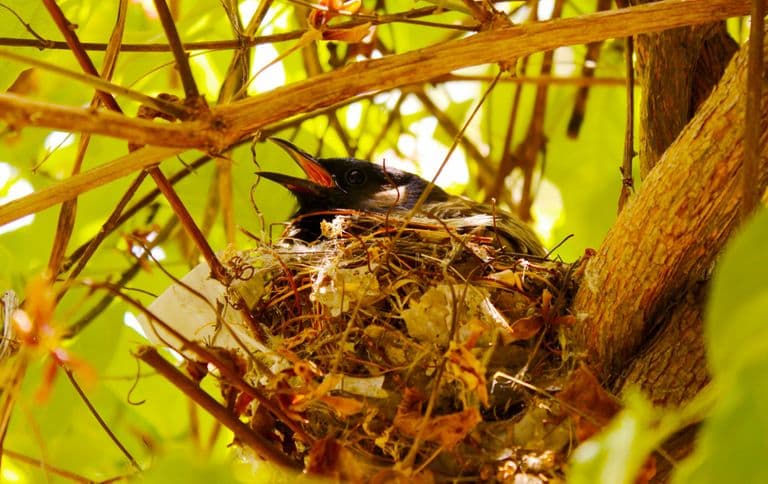
You Might See Them Around
What An Active Nest Is
Just so you know, an “active” nest is something that either contains eggs or is currently in use by birds. With the wildlife protections in place, it is illegal for any of us to disturb such a bird’s nest. On top of that, you need to get a special permit if you need to move one due to an exceptional circumstance.
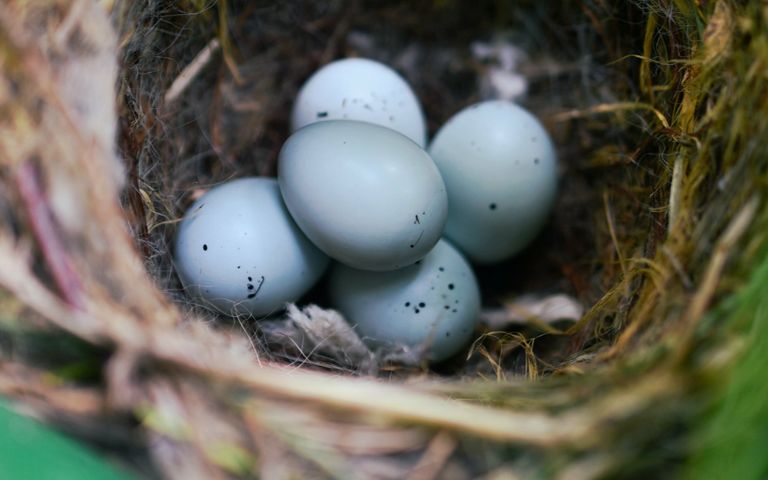
What An Active Nest Is
The Laws Are Stricter About Certain Birds
For certain protected bird species, there are stricter rules about the nests. For one thing, it is illegal to mess with the nests of bald eagles or golden eagles. It does not matter whether they are currently empty or occupied. If you break this law, you might get two years in prison and a fine worth $500,000.

The Laws Are Stricter About Certain Birds
It Is Hard To Miss Eagle Nests
The good news is that it is difficult to miss these eagle nests. For example, bald eagles tend to go back to the same nest year after year. This is why they make big and sturdy structures for the young. The USFWS website also says that the biggest known nest was 20 feet deep and weighed two tons.
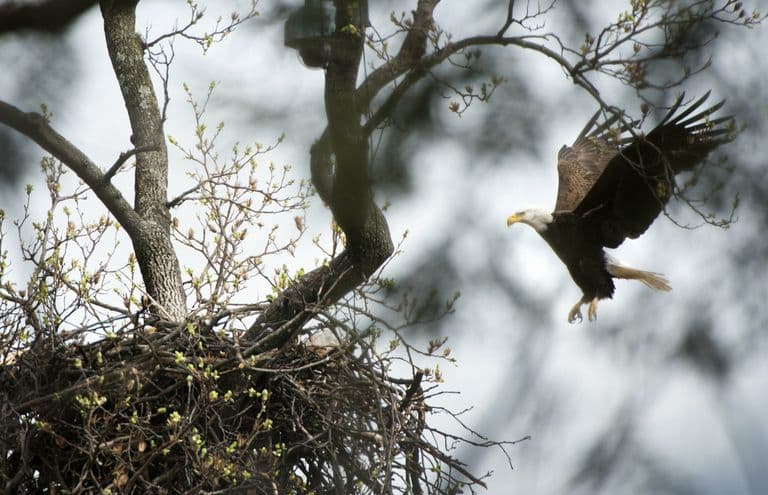
It Is Hard To Miss Eagle Nests
Thanks To The Size Of The Nests
Due to the size of these eagle nests, it is pretty impossible for anyone to accidentally disturb them as they tend their garden. Other birds cannot say the same thing, however. They typically have nests so small that they can go unnoticed. On top of that, they might wind up in harm’s way for that reason.

Thanks To The Size Of The Nests
The Size Of Jelly Beans
The USWS is always concerned about these little eggs whenever spring comes around because of this. The agency needs to warn gardeners to look for objects the same size as “jelly beans” when they tend to their gardens. It says that special care is necessary when they trim their bushes and back shrubs.
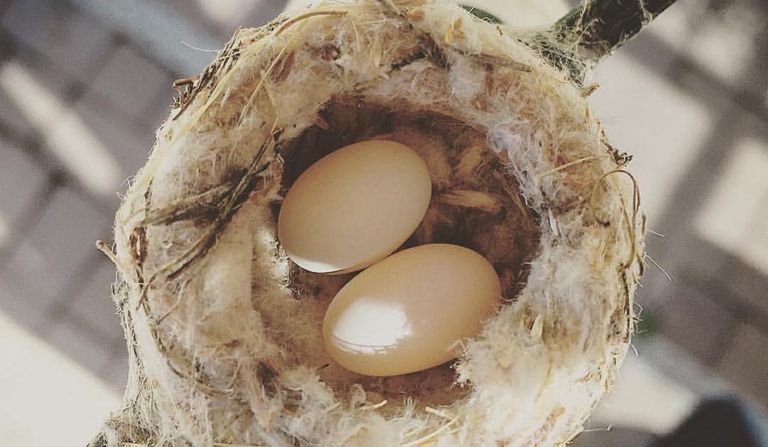
The Size Of Jelly Beans
It Is A Tiny Magical Thing
Without a doubt, these eggs are curious things. They are the same size as a human thumbnail or even smaller. Inside these white orbs, you will find something magical. These objects are incubated in nests as big as table tennis balls for more than two weeks. After that, the mom will try her hardest to ward off predators. She would go as far as to dive-bomb them if that is what it takes to keep the babies safe.

It Is A Tiny Magical Thing
The Eggs Are Small But Important
Even though these are small eggs, they are very important. You see, they are the eggs of hummingbirds! This species is present all over the Americas. It is known as one of the tiniest bird species in the world. While adult ones can weigh anywhere from two to twenty grams, the eggs are only as heavy as half a gram each. It goes without saying that they are very fragile. The expectant birds like to hide the nests in trees and shrubs for extra security. It would be far too easy to squish them by accident otherwise.
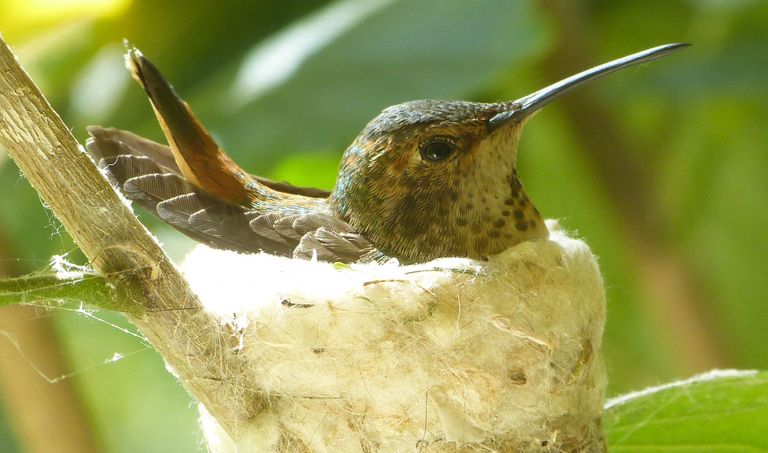
The Eggs Are Small But Important
They Build The Nests High Up
Female birds typically make their nests as high as ten to ninety feet from the ground. They use leaves, plant fibers, spider silk, twigs, and other materials to create a small cup. This is the reason the nests are so stretchy. That part is important as it lets them grow with the size of the family. Nonetheless, the size of the resulting structure remains small. Most of the time, a female hummingbird only builds a nest large enough to accommodate two eggs. At any given time, she only lays a pair of eggs, after all.
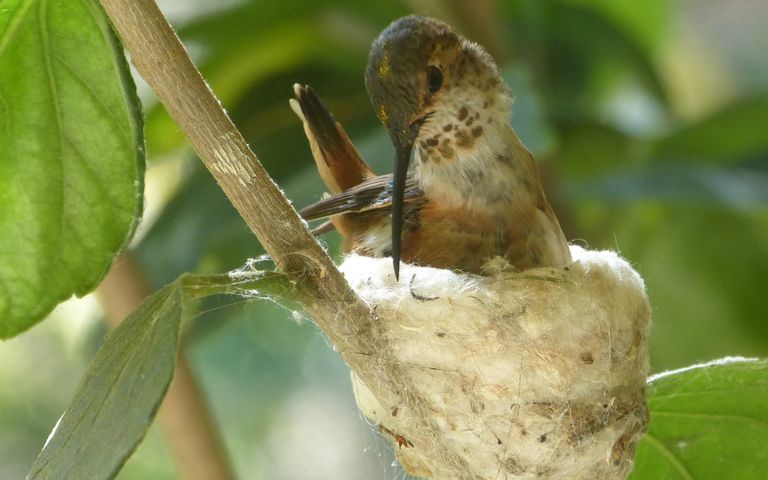
They Build The Nests High Up
Looking For Food For The Babies
Once the eggs hatch, the moms will keep looking after the young in the nests. Among other things, they will look for food to sustain the babies. Most of the time, their diets are composed of sugary nectar that helps nourish their high metabolism. Despite this, the hatchlings need a source of protein to build up their muscles as well. This is the reason the moms look for soft insects like small arachnids and greenflies. Not only that, but they might even steal eggs from insects in the hopes of feeding her little babies.
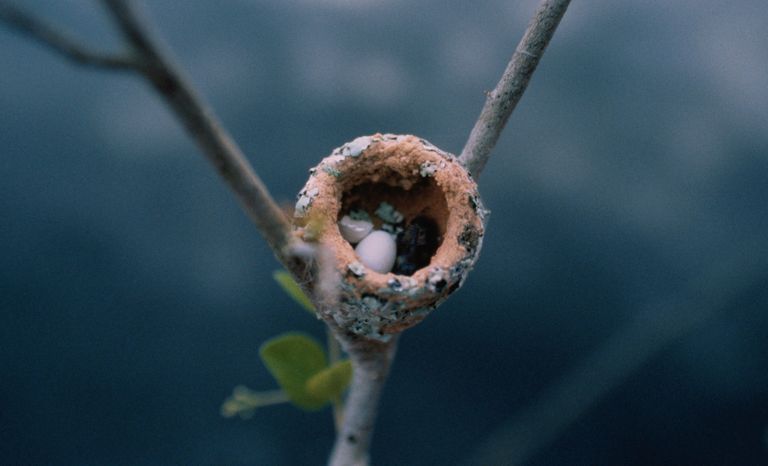
Looking For Food For The Babies
It Keeps Them Safe From The Elements
Even though the babies grow up to be big and strong, the small nest offers them shelter from the outside world during their early days. The moms like to perch on top of the hatchlings to keep them extra safe. The babies stay in the nest for eighteen to twenty-eight days after they hatch. After this period of time, they are now fledglings. These babies need rest as well. Female hummingbirds like to use spider silk in the construction, which gives the structure the ability to expand as the contents grow. The mom will keep patching up the nest to ensure that it can hold all of her little fledglings.

It Keeps Them Safe From The Elements
They Are Too Small To Notice
Due to their size, these hummingbird nests are not easy to spot unless you know what to look for. If you look at them from below, they might look like just some random lump. From above, they are typically hidden by a canopy of leaves. They will look like small knots from the side. Hummingbirds like shielded spots for the nests so that the babies will be safe from predators. They also need shelter from the rain, wind, and sun. The most logical choice for them, therefore, would be spaces between forked tree branches. Dense bushes make for good locations as well.
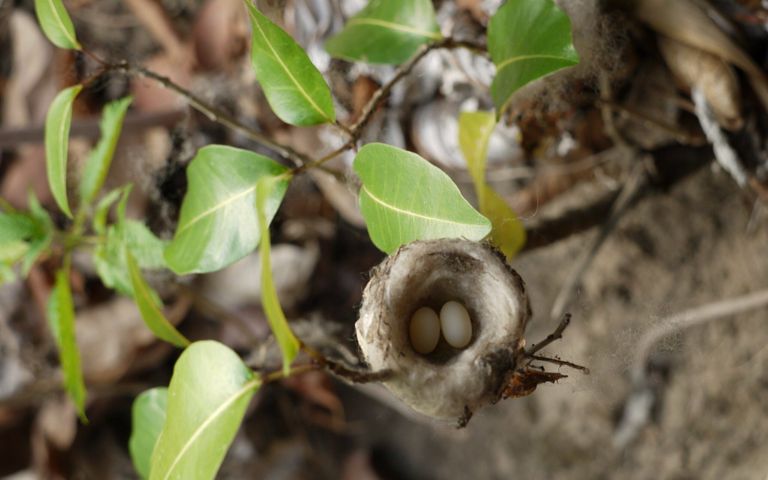
They Are Too Small To Notice
Testing Out A Few Sites
A female hummingbird might visit various potential spots several times to test stability. The perch needs to be capable of supporting the weight of the mother, the nest, and the growing babies. Despite this, the small size of these birds means that a lot of perching spots are capable of holding up the weight of the female and the babies. There are plenty of options for them all in all. We can see why these birds end up picking unexpected spots for the nests. Among other things, they are known to build nests on clotheslines. You might even find them on outdoor lighting strings as well.
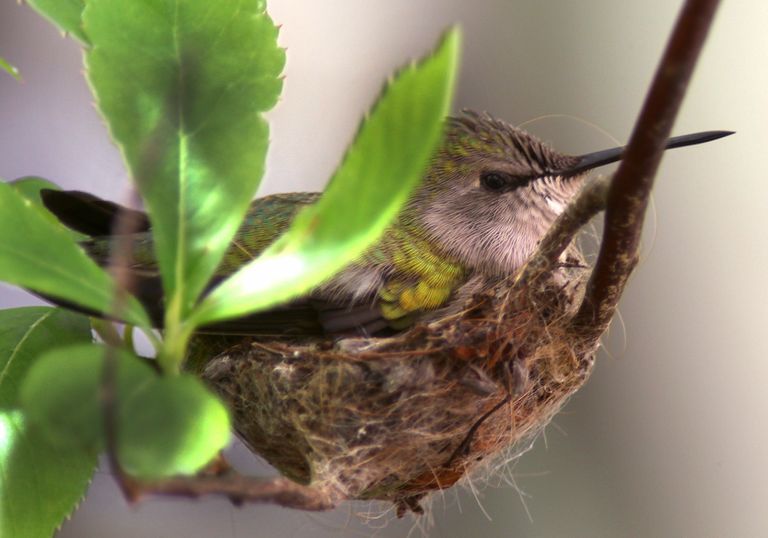
Testing Out A Few Sites
On Top Of Regular Items
Anecdotal evidence says that hummingbirds like to build their nests atop everyday things found in and around the house. Among other things, they have created shelters on top of basketball nets, security cameras, and soccer goal posts. The nests have even been discovered on top of cactuses. This makes sense as the spikes offer another layer of protection. When you are working on your property in the spring, make sure to be extra cautious of these spots. What do you do when you find hummingbird nests while you are gardening? It is a good idea to stay away due to the laws about this matter.
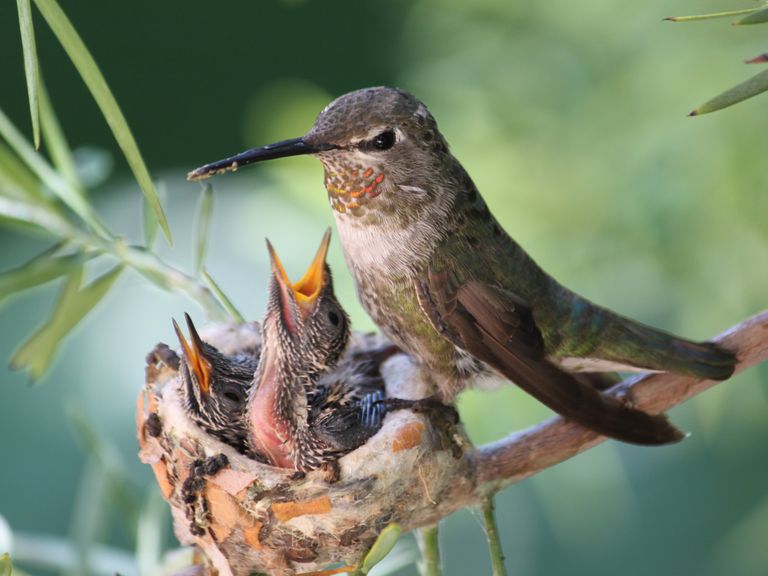
On Top Of Regular Items
Why The Laws Are In Place
Do not forget that it is against the law to mess with these nests. In spring, the nests are considered active. This is a helpful measure to keep the eggs and fledglings safe. It helps pretty much all of our feathered friends, although this is especially important for the hummingbirds. After all, this type of bird is currently under threat. Nearly fifteen percent of all hummingbird species are in danger of extinction. We are sure that you would agree with us when we say that it would be bad for them to vanish.

Why The Laws Are In Place
Nothing Short Of Fascinating
Hummingbirds are truly fascinating animals. For one thing, there is no other bird that can fly backward like it could. Their name is also derived from the sound that the wings make when it beats as fast as 5,400 times per minute. The super-fast beating takes up a lot of energy, so they spend plenty of time recuperating in trees. Of course, it is not easy for birdwatchers to notice them. This is also made worse by their size. These birds often weigh less than a nickel. The tiniest hummingbird species, which is called the bee hummingbird, only weighs two grams. Might we mention that it is also only an inch long?
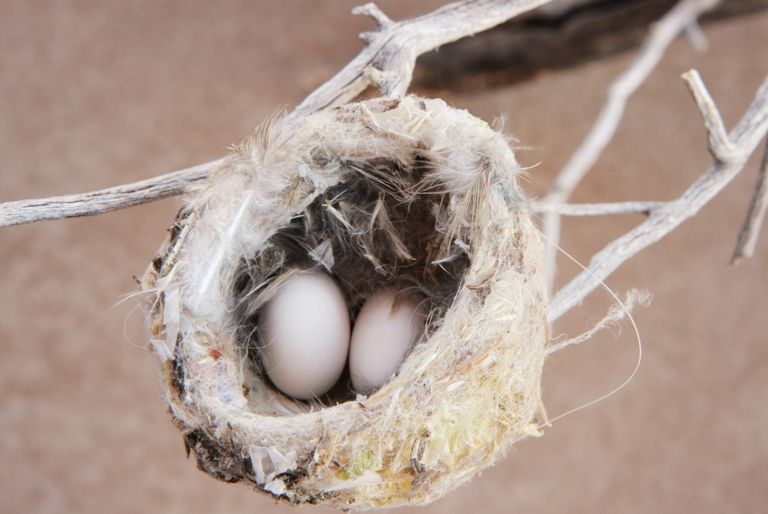
Nothing Short Of Fascinating
How They Make Up For Their Size
Even though hummingbirds are small, they make up for their size in more ways than one. They have the biggest hearts of all the animals in the world. On top of that, the birds can cross a distance of 500 miles by flying non-stop for twenty hours when they migrate. These creatures need to consume double their body weight in food in a single day to maintain their energy levels. This is possible because they have tongues that can protract and contract thirteen times per second. While this is fascinating to learn, this is bad news for all the tiny insects that they eat each day.
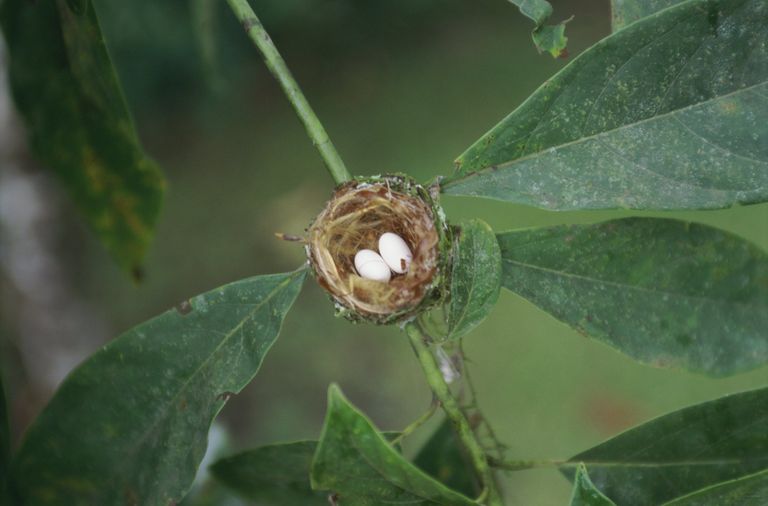
How They Make Up For Their Size
Let Us Keep These Birds Safe
There is no doubt in our minds that hummingbirds are amazing creatures. Their population is currently in decline, so we humans have to do everything in our power to keep them safe. Hold up before you start hacking away at the bushes and shrubs in your garden next spring. You should take the time to look for tiny nests and eggs before you go about it!

Let Us Keep These Birds Safe
